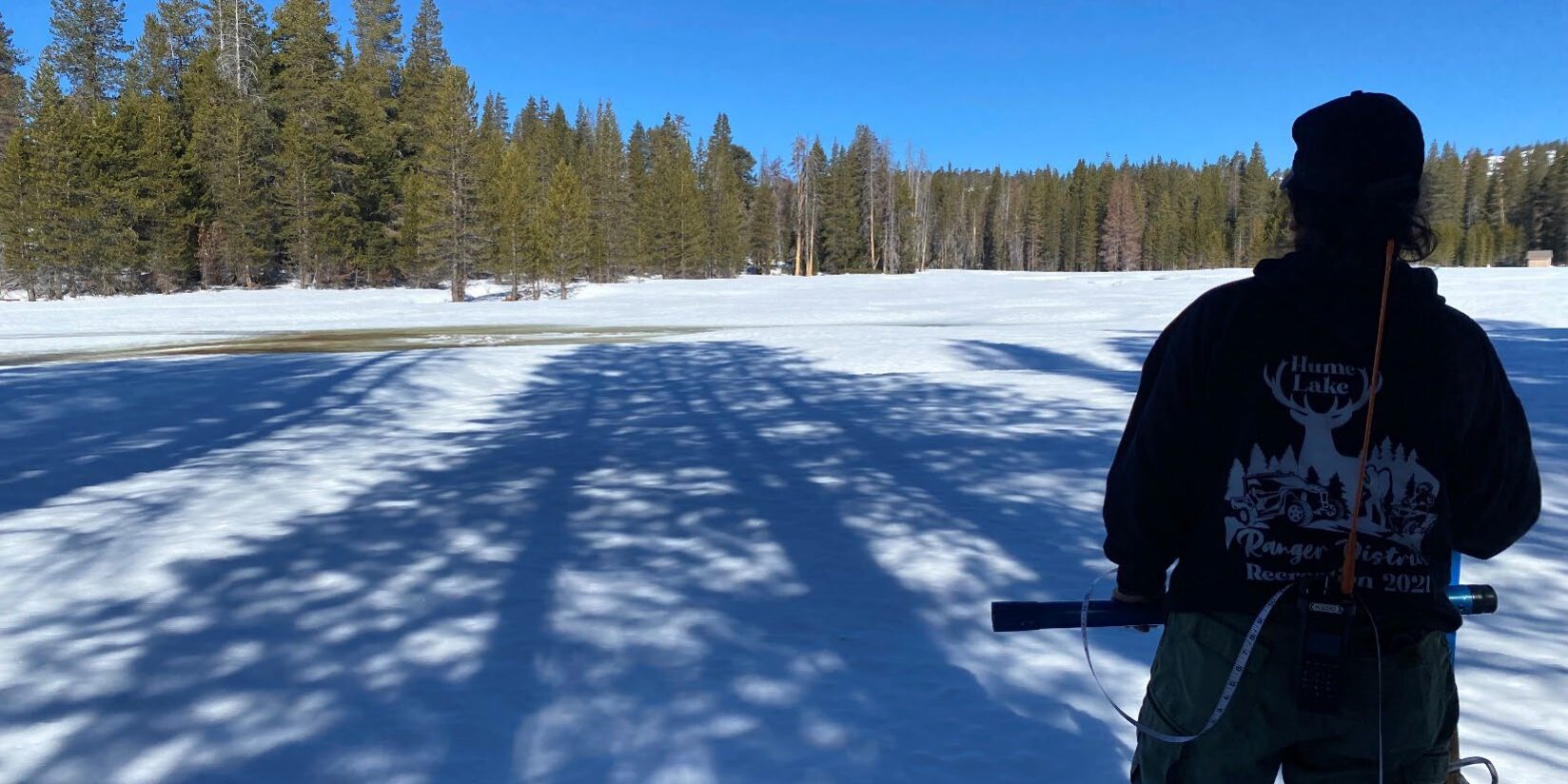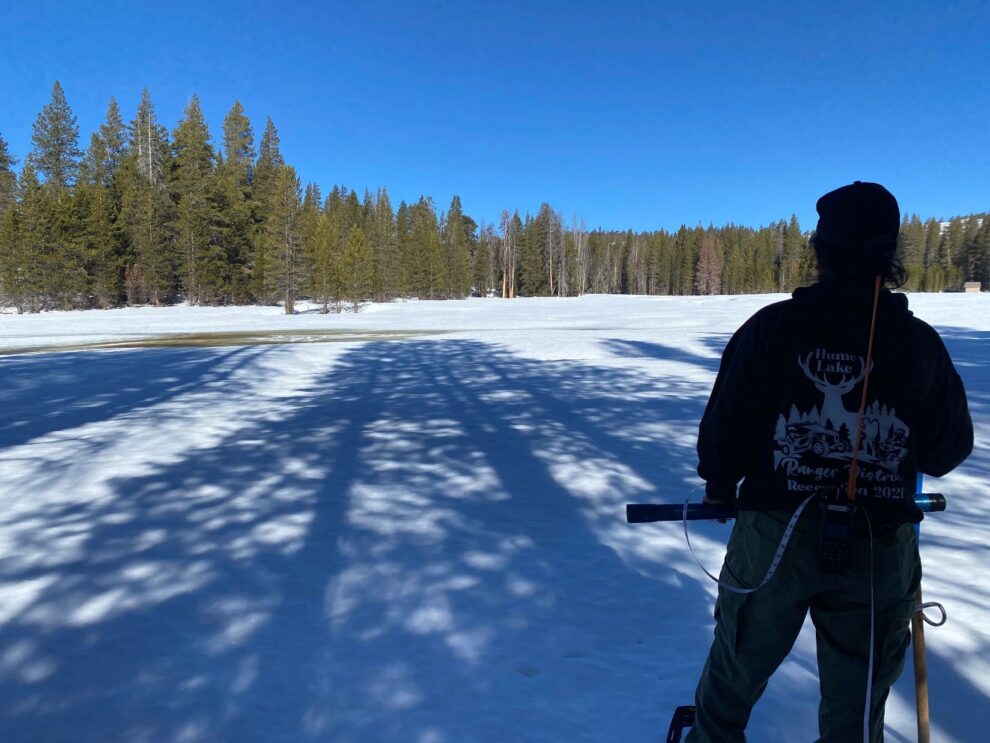It wasn’t a miracle March of storms, but it also wasn’t madness for the water supply. Recent snowfall events draped much of the Kings River’s watershed in white, last month’s storms boosted the snowpack’s frozen supply to 79% normal for April 1. Although that number does not include what is currently falling. The April 1 snow survey is typically when Sierra Nevada snow conditions reach their peak for the season.
“”It’s a decent year. It’s not a bad year. It’s a decent year,” says Steven Haugen, Kings River Water Association Watermaster. “Above normal precipitation and snowpack in February and March changed the water supply for the year.”
Snow Survey teams found snow depths averaged 60 inches this year compared with 70 inches in an average winter. Snowpack water content increased by almost 6 inches since last month. Snow surveyors found 21.8 inches of snow water content. Like last month, the Kings still has about 2-3 inches less water content than last year for April.
Northern Sierra snowpack has caught up to near normal conditions. However, further south in the Kings and surrounding river basins the conditions are slightly drier. “It’s great news that our state’s snowpack has recovered from several weeks of extremely dry conditions in the heart of our winter storm season,” said California Department of Water Resources (DWR) Director Karla Nemeth. “However, it’s not a wet year across the entire Sierra Nevada. The north has great snowpack, but snowpack is less than average in the central and southern part of the mountain range.”
Conditions in the region, and beyond, were excessively dry before decent storms in February and March provided crucial snowpack to California’s frozen reservoir. “We are very thankful to be ending March where we are now with more snow in the forecast next week, especially considering the dry start to the year,” said Andy Reising, manager of DWR’s Snow Surveys and Water Supply Forecasting Unit. “From major storms in November and December to a bone-dry January, then back to major storms in February and March, this year is a lesson in why we can never know for certain what our water picture will look like until we get to the end of our traditional wet season.”
The snow information collected by DWR and the California Cooperative Snow Surveys Program partners are necessary inputs into State and Federal runoff forecasts that help water managers plan operations. Last week, California DWR also collected data from Airborne Snow Observatory (ASO) flights over the Kings watershed finding more than 1 million-acre-feet of snowpack water. “You cannot manage a water supply if you do not measure it,” said Haugen. “Snowpack data collected during the winter and spring months is vital to downstream San Joaquin Valley water agencies and users in portions of Fresno, Tulare and Kings counties for whom the Kings River is the primary source of water.”
Water managers intend to keep using important operational tools, like ASO, to meet the States Water Resilience Portfolio goals. The Water Resilience Portfolio provides California with a roadmap to building water resilience by funding the State’s ASO program to inform water supply and runoff forecasting in a warmer and more variable climate. “Funding these programs is crucial for all of California,” said Haugen. “Future funding for these measurements is at risk given State budget shortfalls.” Additionally, Federal personnel and funding cuts put the entire California Cooperative Snow Surveys Program at risk, with the loss of Federal employees to complete the on-the-ground measurements.
Snow surveyor Paloma Garcia of the United States Forest Service surveys Big Meadows snow course at 7,600-foot elevation in the Kings River Basin. (PHOTO BY JENNIFER GONZALEZ, KRWA HYDROGRAPHER)
For more information, please contact:
Steve Haugen
Kings River Watermaster
559-217-5249
559-266-0767 office


